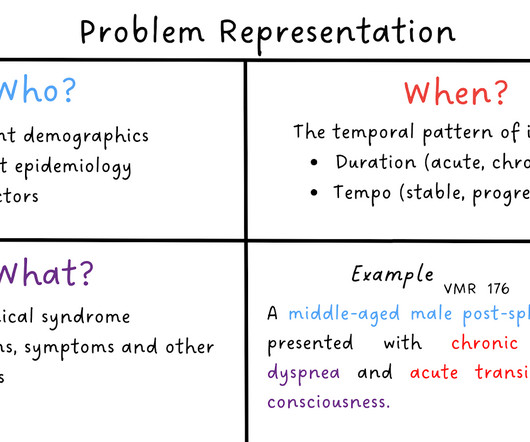Problem Representation
The Clinical Problem Solvers
JUNE 12, 2022
A problem representation (PR, or Summary Statement) is an evolving, concise summary that highlights the defining features of a case , helping clinicians generate a focused differential diagnosis and identify the next steps in diagnosis and treatment. One more important point: the problem representation is dynamic. Who is the patient?
















Let's personalize your content